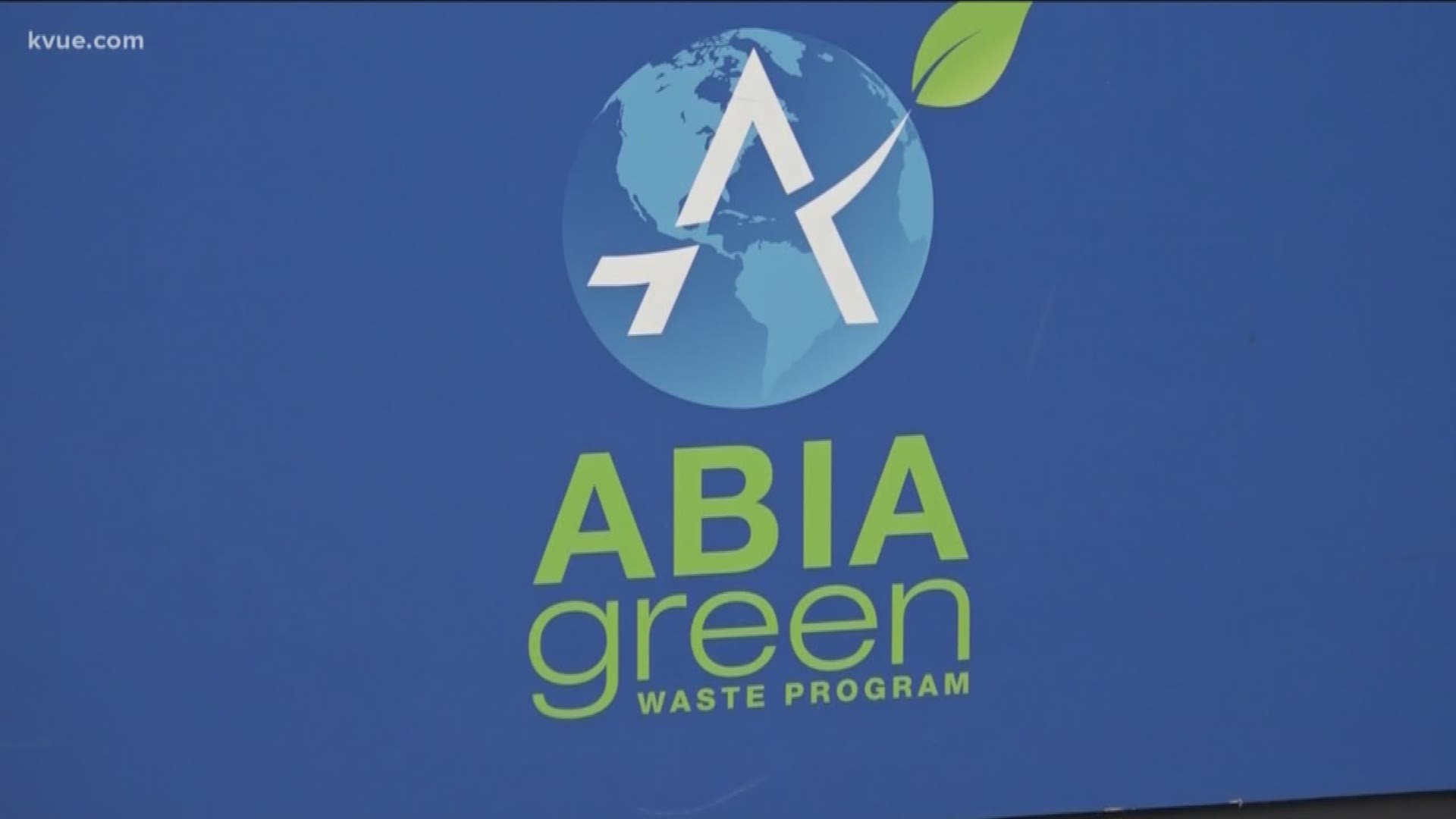AUSTIN, Texas — As one of the busiest travel days of the year at Austin-Bergstrom International Airport (AUS) approaches, airport staff is working hard to keep sustainability efforts a high priority.
The 2019 Formula 1 Grand Prix is expected to bring a high volume of travelers to Austin this weekend. Already in October, the airport set two records for passenger traffic.
“As a team, we work together to achieve sustainability goals to match along with the City's goals,” said BJ Carpenter, the sustainability coordinator for AUS.
Carpenter’s job includes managing about 10 tons of waste – recyclable, compostable or landfill material – that comes into the airport every day.
“The inside of the airport is the real beast. It's where we have 30,000 passengers moving from their planes, moving through secure areas, to unsecured areas,” he said. “It's a real challenge to try to get something across to all of those passengers in a very short period of time. They're very busy, they're on their way to go somewhere, they're concerned about what they're going to do when they get there.”
The airport has a robust composting and recycling program, as well as "pour it out" stations to recycle bottles at TSA checkpoints. The terminal is powered by wind energy and outside the airport, staffers use electric vehicles or bikes to move between airport buildings.
Eventually, the airport will have the City’s biggest array of solar panels on top of a new parking garage.
RELATED:
“We are trying to reduce our carbon impact, which is diesel emissions. The majority of our impacts are from diesel equipment,” said Nicholas Ramirez, a program manager for AUS's environmental division.
Ramirez said the airport also worked with the airlines to install electric vehicle charging stations for the equipment they use on the tarmac.
“It brings awareness that the airport is trying to go green. We're trying to be zero waste, carbon neutral, supporting City initiatives,” Ramirez said.
Airport staff said AUS has a lot of room for improvement but has already made “leaps and bounds” just in the last four years.
“People are demanding responsible government and responsible corporate partners now. And they're making decisions on where they buy things, and who they fly with and what airport they fly out of even,” Carpenter said.
The goal is to become completely carbon neutral by 2020.
“We want this airport to have the feel of Austin and express the values of our city,” Carpenter said. “It means a lot to everybody in Austin. It's something the city takes to heart.”
PEOPLE ARE ALSO READING:

